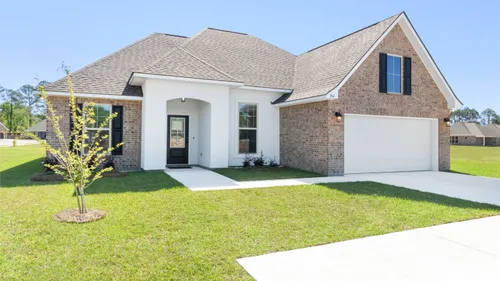Experienced General Contractor Indiana for Residential and Commercial Projects
Experienced General Contractor Indiana for Residential and Commercial Projects
Blog Article
Exactly How a General Contractor Can Transform Your Usual Areas Into Functional Areas
The transformation of usual areas right into useful spaces is a nuanced procedure that requires a basic service provider's proficiency in assessing details community needs and designing customized solutions. By thinking about elements such as design, access, and visual charm, a service provider can produce atmospheres that not only offer sensible functions however likewise foster area engagement.
Assessing Current Common Area Needs
When evaluating usual areas, it is essential to determine and comprehend the specific requirements of the community they serve. This process starts with an extensive analysis of current usage patterns, which involves gathering information on foot traffic, optimal usage times, and activities happening within these spaces. Engaging with area members with studies or conferences can offer beneficial insights right into their choices and challenges.
Following, it is important to take into consideration the demographic structure of the neighborhood, including age, way of life, and any type of unique needs that might influence just how these spaces are made use of. Families with young youngsters might call for play locations, while older adults may prioritize ease of access functions.
Furthermore, reviewing the existing framework and features is critical. Identifying locations that are underutilized or in need of repair work can inform possible improvements. Collaborating with stakeholders, such as home managers and local organizations, guarantees that the evaluation mirrors a detailed understanding of the neighborhood's requirements.
Ultimately, a careful evaluation of current typical area needs lays the groundwork for effective transformations, permitting the development of spaces that promote interaction and boost the overall high quality of life within the area.
Designing for Functionality and Visual Appeal
A thorough understanding of community requires establishes the phase for efficient design that balances capability and aesthetic appeals alike locations. Effective style needs a thoughtful approach that thinks about both the practical uses of the space and the aesthetic charm that enhances the setting.
Practical design entails producing areas that deal with the particular activities and interactions of the community. This might include versatile seating plans for celebrations, accessible paths for people with movement obstacles, or designated locations for leisure tasks. Each aspect has to serve a purpose while ensuring simplicity of motion and convenience for individuals.
Looks play a critical role in promoting an inviting environment. The choice of colors, materials, and lights can considerably impact the understanding of a room. Incorporating natural environments, such as greenery or water attributes, can enhance the ambiance and produce a soothing environment. Furthermore, aligning the layout with the area's cultural identity can promote a sense of belonging and pride.
Budgeting and Source Allotment
Effective budgeting and source appropriation are crucial components in the successful transformation of typical locations. A well-defined spending plan details the monetary parameters within which the job should run, making certain that costs are managed and sources are properly used. This starts with a comprehensive evaluation of job needs, consisting of layout aspects, materials, and labor.

A basic professional plays an important duty in this phase, collaborating with stakeholders to develop practical budget plan estimates that straighten with the designated vision. By focusing on essential functions and discovering cost-effective options, the contractor can optimize spending without endangering quality.
Source allowance requires tactically designating personnel, equipment, and materials to different phases of the job (Bathroom Remodeling Indiana). This requires mindful planning to ensure and avoid delays that each element is delivered promptly. In addition, regular surveillance of expenditures versus the spending plan assists to identify possible overruns early, permitting prompt changes
Managing Building And Construction Process Successfully
Handling the building process successfully is important for accomplishing prompt job conclusion and maintaining budget integrity. A well-coordinated technique entails precise preparation, clear communication, and reliable source monitoring. General specialists have to establish an in-depth job timeline that lays out each stage of building and construction, allowing for the identification of prospective bottlenecks and important landmarks.
Routine development meetings are crucial for maintaining all stakeholders informed and lined up. These meetings facilitate the timely resolution of problems, making certain that the job remains on track. Furthermore, using task management software program can enhance communication, track progression, and handle documents, lowering the likelihood of misunderstandings and delays.
Efficient resource allowance is additionally extremely important. By guaranteeing that materials, labor, and tools are offered when needed, basic professionals can stop expensive disruptions. Implementing an aggressive technique to run the risk of monitoring additional boosts effectiveness, as it allows for the recognition and mitigation of potential challenges before they rise.

Making Sure Compliance and Top Quality Requirements
Conformity and high quality requirements are essential to the success of any type of construction task, making sure that the ended up spaces not just fulfill client expectations but likewise comply with governing demands. A general specialist plays a pivotal function in enforcing these standards throughout the building and construction procedure.
First, it is essential for the service provider to remain updated on regional building ordinance, safety laws, and sector finest practices. This expertise allows them to visit this site right here direct design options and product selections that line up with conformity requirements. Normal examinations and top quality assessments during the building and construction stage help to recognize prospective concerns early, alleviating expensive delays and rework.
Furthermore, a reliable basic contractor promotes a culture of quality among subcontractors and employees. This can be attained by supplying training on conformity methods and executing rigorous top quality control procedures. By establishing clear communication channels, the specialist can guarantee that every person included recognizes their duties relating to conformity and high quality.
Final Thought
In final thought, the duty of a general service provider in changing common areas into useful rooms is critical. With a comprehensive evaluation of area requirements, thoughtful style, careful budgeting, and efficient task administration, these professionals can produce settings that boost usability and aesthetic allure. Adherence to conformity and quality requirements additionally ensures that revitalized spaces not just satisfy the assumptions of stakeholders but likewise foster interaction and enrich the total experience for all customers within the area.
The change of usual areas into functional areas is a nuanced process that requires a basic contractor's competence in examining certain community demands and making customized solutions. By taking into consideration variables such as format, ease of access, and visual allure, a service check provider can see create settings that not only offer useful functions yet additionally foster neighborhood involvement. General contractors must develop a thorough task timeline that lays out each stage of construction, permitting for the identification of crucial landmarks and potential traffic jams.

Report this page